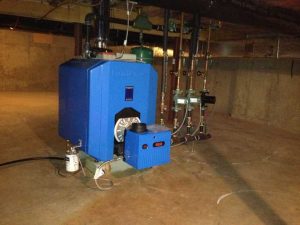Seven Ways to Reduce Heating Bills this Winter
By Mark J. Donovan
|
|
With the cost of energy so high now days, it’s important to maximize efforts in reducing heating bills. Whether you’re heating with oil, gas, or electricity, your home heating bills can become exorbitantly high during the winter season. For many folks they simply cannot afford to heat their homes adequately and find themselves looking for public assistance in the form of reduced fuel costs. Seeking government heating assistance, however, is not the only solution to staying warm this winter.
Homeowners can take a number of steps to keep their home warmer during the winter months, that won’t cost them a fortune. |
Some involve investing in low cost insulation materials, while others simply involve doing things a bit differently. Both, however, can go a long way in reducing heating bills.
First and foremost inspect around doors and windows for drafts. If you feel any, purchase door and window weatherstripping and install it appropriately around the doors and windows to eliminate the drafts. Door and window weather stripping costs only a few dollars and requires virtually no handyman skills to install. So there are no excuses!
In addition to installing door and window weatherstripping also apply caulk around the exterior of the door and window frames. Again, caulk only costs a few dollars and even the most unskilled DIY homeowner can apply it. Just have plenty of wet paper towels handy to wipe away excess caulk. These two basic tasks by themselves can go a long way in reducing heating bills.
In addition, as the warm moist air condenses in the cold attic air it forms as small water droplets on the roof sheathing. So make sure the attic stairs are air tight. There are insulation covers specifically designed to go over attic stairs to prevent heat loss to the attic and consequently reduce heating bills.
If your home has a fireplace make sure that the damper is tightly closed when not using it. Fireplaces are notorious for sucking warm air out of a home.
| By itself, a damper left continuously open can raise home heating bills 30%. Also, consider buying sealed glass fireplace doors to help cut down on the chimney sucking warm air out of the home and for preventing cold down drafts.
Fireplaces are notoriously energy inefficient for heating. Even when using a fireplace the chimney often sucks more heat up it than the fireplaces produces in the home. Consequently you may want to consider not using the fireplace during the winter or alternatively replacing it with a wood stove insert. |
 |
Finally, dryer vents are another notorious heat loss culprit. The typical low cost dryer vent relies on gravity to keep cold air from penetrating into the dryer and home. However, the dryer vent louvers are notoriously cheap and are prone to not closing properly due to lint build up. A simple solution for reducing heating bills associated with drafty drier vents is to install a dryer vent seal. A dryer vent seal will eliminate cold air drafts, as well as prevent insects and rodents from finding a way into your home.
For information on Restoring Baseboard Heating Element Covers, see the Restoring Baseboard Heating Element Covers eBook from HomeAdditionPlus.com. The Restoring Baseboard Heating Element Covers Ebook provides easy to understand, step-by-step instructions, on how to restore Baseboard Heating Element Covers so that they look new again. Pictures are included for every key step in the process.
For information on how to maximize a wood stove’s heating efficiency, see HomeAdditionPlus.com’s Installation of Hood over Wood Stove eBook.
Related Information
- Radiant Electric Heating Advantages
- How to Ensure a Warmer Home this Winter
- Gas Stoves versus Wood Stoves for Supplemental Heating
Additional Heating and Cooling Resources from Amazon.com
 |
 |
Free Heating and Cooling Price Quotes with No Obligation!
Fill out our 3-5 minute quick and easy form, and receive a free price quote on heating & cooling from one of our pre-screened and licensed HVAC contractors. This process is free and there is no obligation to continue once you receive your heating & cooling price estimate.

